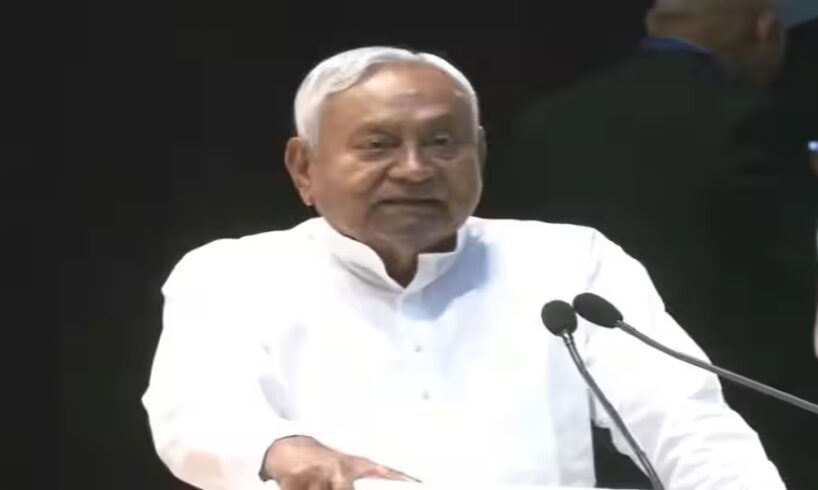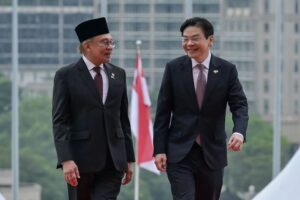
Patna: Ending weeks of speculation over seat-sharing strains within Bihar’s ruling National Democratic Alliance (NDA), the Janata Dal (United) or JD(U) released its first list of candidates on October 15 for the upcoming Bihar Assembly elections. The list includes 57 names and reflects a familiar pattern. Chief Minister Nitish Kumar has once again turned to his long-tested political formula of caste-based social engineering.
The JD(U) will contest 101 seats in total. The remaining 44 names will be announced later. The first phase of nominations will be closed on November 17; and therefore, candidates have just one day left to file their papers.
The strategy behind the list is clear. Nitish has leaned heavily on his trusted “Love-Kush” base, the Kushwaha and Kurmi communities that have formed the backbone of his politics for nearly two decades. Of the 57 candidates, about 40 percent belong to these two groups, with the Kushwahas getting a slightly larger share. The signal is unmistakable: counter Upendra Kushwaha’s Rashtriya Lok Morcha (RLM) and retain this crucial vote bank within the JD(U) fold.
Add Zee News as a Preferred Source
In the 2020 election, Chirag Paswan’s rebellion through the Lok Janshakti Party (LJP) cost the JD(U) dearly. Nitish appears determined not to repeat that mistake. His focus this time is to secure his base before negotiating space with his ally. A united Love-Kush front remains his political lifeline.
A Subtle Foray Into BJP Territory
The JD(U) list also reveals a careful outreach to BJP’s traditional upper-caste vote bank. Bihar’s savarna population, which includes Rajputs, Bhumihars and Brahmins, forms about 10 percent of the state. Nitish has allotted 13 tickets to candidates from these communities. Among them are three musclemen, showing that muscle and caste continue to influence Bihar’s political arithmetic.
With both the JD(U) and the BJP contesting 101 seats each, Nitish understands that his party must deliver a higher strike rate to retain bargaining power. His outreach to BJP voters looks more like an act of survival than confrontation.
Dalits And EBCs Included
Along with his Love-Kush focus, Nitish has made efforts to reach Dalits and Extremely Backward Castes (EBCs). The JD(U) has fielded 12 Dalit candidates, including five from the Ravidas community and three from the Musahar group. Only one candidate is from the Paswan community, which remains loyal to Chirag Paswan. Dalits constitute nearly 20 percent of Bihar’s population.
Among EBCs, the Vaishya community has received four tickets and the Mallahs two. Analysts see this as an attempt by Nitish to build a non-Yadav OBC front against the opposition Rashtriya Janata Dal (RJD).
In Yadav-dominated regions such as Madhepura and Maharajganj, the JD(U) has fielded Vaishya candidates to undercut RJD’s influence.
Three Yadavs, No Muslims
The most striking feature of the list is the complete absence of Muslim candidates. In 2020, the JD(U) fielded 11 Muslim nominees, but none won. This time, the party has dropped them altogether. Only three Yadav candidates appear on the list, reflecting Nitish’s assessment that Muslim and Yadav votes will consolidate behind the RJD. His new focus is to unify upper castes, EBCs, Mahadalits and the Love-Kush bloc.
Old Faces Return, Some Dropped
Several familiar faces are back, including former ministers Ramsevak Singh, Santosh Nirala and JD(U) Bihar State President Umesh Singh Kushwaha. Singh and Kushwaha belong to the Koeri community, while Nirala represents the Ravidas group. All three had lost in 2020 but continue to enjoy Nitish’s trust.
Eighteen sitting MLAs have been re-nominated, including Krishna Murari Sharan alias Prem Mukhiya, who once won by only 12 votes from Hilsa in Nalanda district.
However, four sitting MLAs have been dropped, sparking protests outside the chief minister’s residence. In Nabinagar (Aurangabad district), workers shouted slogans after local leader Virendra Kumar Singh was denied a ticket. In Gaighat (Muzaffarpur district), former MLA Maheshwar Yadav staged a sit-in protest. Even Narendra Kumar Niraj alias Gopal Mandal (who represents Gopalpur constituency in Bhagalpur district) showed up at Nitish’s residence, demanding a meeting and accusing rivals within the JD(U) of sabotaging him. The police eventually escorted him away.
The Seat-Sharing Undercurrent
Political observers see the JD(U) list as both a balancing act and a subtle show of discontent. Political scientist SM Diwakar said the list reflects Nitish’s reduced influence within the NDA. “The message is that Nitish’s hold has weakened while the BJP expands into areas once dominated by the JD(U),” he said.
He added that the BJP’s long-term strategy is clear: to build new anchors among Dalits, OBCs and Pasmanda (socio-economically backward) Muslims. With Nitish’s advancing age and waning political strength, it becomes easier for the BJP to shift ground. “Chirag Paswan stands to gain the most from this arrangement,” he said.
The Party Line
JD(U) Working President Sanjay Jha dismissed any talk of internal discord. “Every decision is being taken with Nitish Kumar’s approval. He is in regular touch with BJP’s senior leadership in Delhi and will campaign across the state,” he said.
The first JD(U) list underlines an old truth about Nitish’s politics: alliances may shift, but his survival strategy remains the same. He continues to balance each rung of Bihar’s complex social ladder, one caste block at a time.





